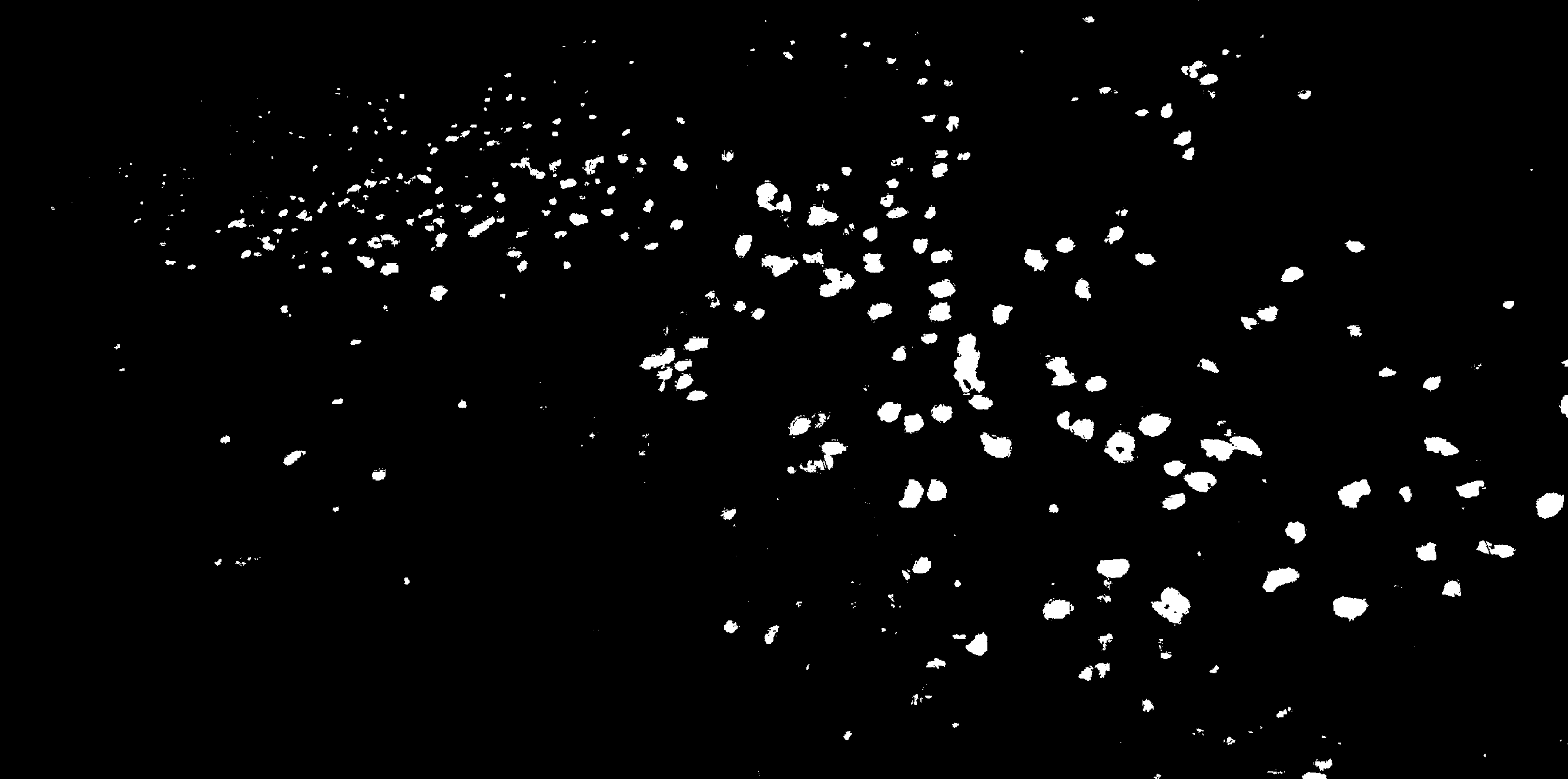Here is what I get.
img = Import["https://i.sstatic.net/o3S3Q.jpg"];
red = Fold[ImageSubtract, #[[1]], Rest[#]] &@ColorSeparate[img]

b = Binarize[red]

pos = ComponentMeasurements[b, {"Centroid", "EquivalentDiskRadius"}];
Length[pos]
633
Fine Tuning
Since the flowers in the top left corner are comparatively dull in colour, they are not properly identified. In such case a segment wise fine tuning may be helpful.
Consider a $300 \times 300$ block at top left corner. The previous method give 13 flower in this region.
im2 = ImageTake[img, {0, 300}, {0, 300}];
red = Fold[ImageSubtract, #[[1]], Rest[#]] &@ColorSeparate[im2]
b = Binarize[%];
pos = ComponentMeasurements[b, {"Centroid", "EquivalentDiskRadius"}];
Length[pos]
13
Now we do a manual fine tuning by eliminating other colors.
im3 = ColorReplace[im2, Green, 0.3];
MorphologicalComponents[im3] // Colorize;
ColorReplace[%, DominantColors[%]] // Binarize;
fls = ComponentMeasurements[%, {"Centroid", "EquivalentDiskRadius"}];
Length[fls]
92
Show[im2, Graphics[{Red, Circle[#, 10] & /@ fls[[All, 2, 1]],
Black, Circle[#, 10] & /@ pos[[All, 2, 1]]}]]

So our count increases by (92-13) = 79.
You might want to use this method for the whole image. In that case it will consider the lady as a lot of flowers and that would be 'mathematically' incorrect.





ComponentMeasurements[ MorphologicalComponents[ChanVeseBinarize[img, Red]], "Count"] // Length$\endgroup$ComponentMeasurements[ MorphologicalComponents[ ChanVeseBinarize[img, Red, MaxIterations -> 1]], "Count"] // Length. I get 317. $\endgroup$